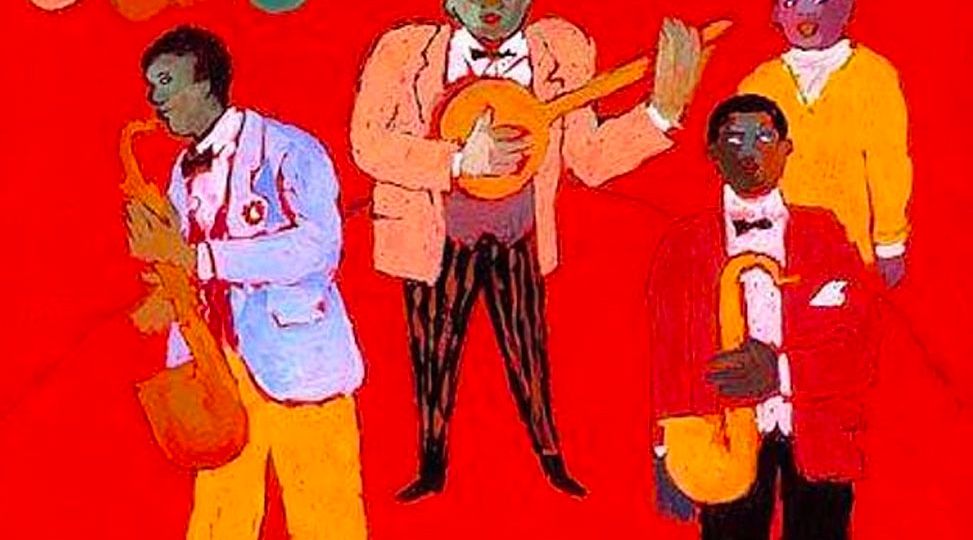
When the Music Plays the Band
“Marriages” and Individuation
Mark Ransom, January 22, 2019
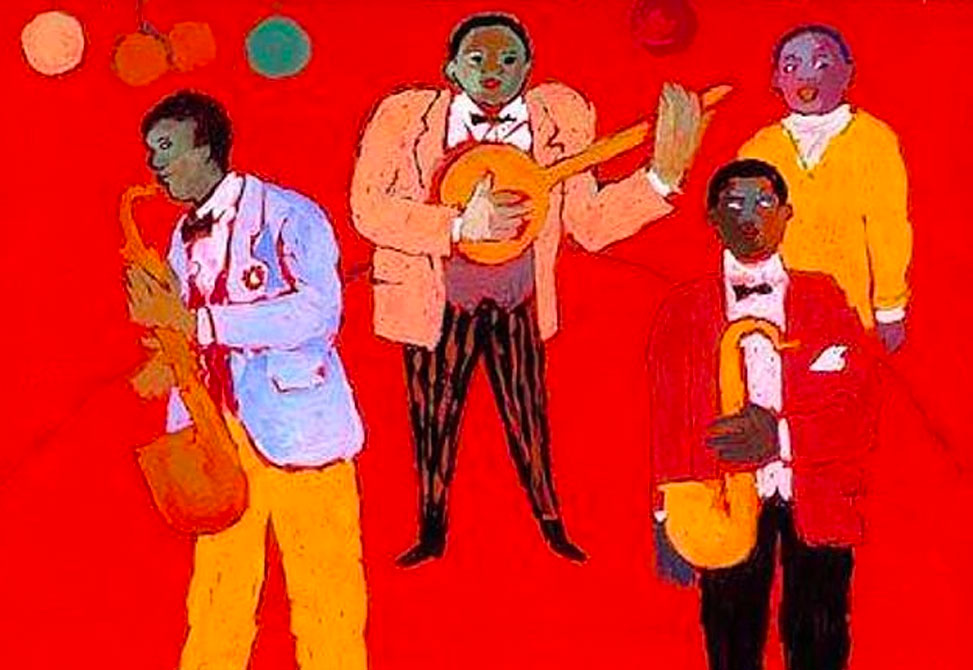 Every relationship offers opportunities to uncover preferences, to see how one’s “gifts differ” (Myers & Myers, 1980/1994) from and complement each other, and to foster development of the less-preferred functions. Such individuation opportunities are virtually inescapable in those long-term and intense personal and vocational relationships that David Whyte (2009) calls “marriages.” Whyte suggests that we are simultaneously married to our spouse (and family/personal relationships), to our job, and to ourselves in a Jungian sense. The idea that vocation leads to and participates in individuation sounds lovely, but it is easier said than done. Although we believe we can keep our marriages balanced with one another, according to Whyte, as soon as we use the balance model, something has to give—and at some point, at least one of our marriages will suffer. The model itself implies a zero-sum game; when one part rises, others must fall. The task of keeping different aspects of our lives in-dialogue may be more doable and thereby more useful than a goal of balance.
Every relationship offers opportunities to uncover preferences, to see how one’s “gifts differ” (Myers & Myers, 1980/1994) from and complement each other, and to foster development of the less-preferred functions. Such individuation opportunities are virtually inescapable in those long-term and intense personal and vocational relationships that David Whyte (2009) calls “marriages.” Whyte suggests that we are simultaneously married to our spouse (and family/personal relationships), to our job, and to ourselves in a Jungian sense. The idea that vocation leads to and participates in individuation sounds lovely, but it is easier said than done. Although we believe we can keep our marriages balanced with one another, according to Whyte, as soon as we use the balance model, something has to give—and at some point, at least one of our marriages will suffer. The model itself implies a zero-sum game; when one part rises, others must fall. The task of keeping different aspects of our lives in-dialogue may be more doable and thereby more useful than a goal of balance.
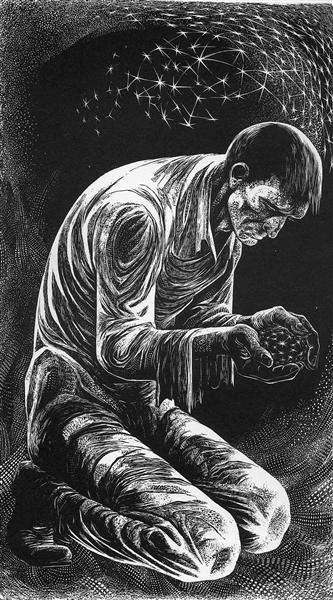 I learned the hard way that applying the ideal of balance to a musician’s life is a recipe for disaster. Not only do the demands for individuation collide and compete with the needs for relatedness, but artists’ work inherently invites us to dance with the archetypal. Jung’s process in The Red Book embodies and exemplifies this dance. The people in his circle made space for him to play in mud puddles, converse with his “guides,” write “poetry,” and paint fantasy images. For artists who work professionally in this space, reality is ecstatic-imaginal, not so rational, practical, or material—which can make family life and a day-job tricky. When musicians are doing their job, the music plays the band, and this ongoing numinosity has a seductive daemonic quality.
I learned the hard way that applying the ideal of balance to a musician’s life is a recipe for disaster. Not only do the demands for individuation collide and compete with the needs for relatedness, but artists’ work inherently invites us to dance with the archetypal. Jung’s process in The Red Book embodies and exemplifies this dance. The people in his circle made space for him to play in mud puddles, converse with his “guides,” write “poetry,” and paint fantasy images. For artists who work professionally in this space, reality is ecstatic-imaginal, not so rational, practical, or material—which can make family life and a day-job tricky. When musicians are doing their job, the music plays the band, and this ongoing numinosity has a seductive daemonic quality.
I am constantly moved by this force, asking myself if it is leading me into itself or encouraging me to remember what it has called me away from. I have discussed this question with many musician and artist friends, and it is one around which I continue to spiral. My wife and daughter know there is only one thing that takes me away from them and that without it I would shrivel up and die. All the members of my band (“The Mostest”) agree: It seems if we avoid facing this painful question, things tend to fall apart—which is not necessarily “bad” but almost always difficult.
Rainer Maria Rilke’s lifelong poetic unfolding shows artistic development on one hand but perhaps a psychological failure on the other. When he left his wife and daughter to pursue an artist’s life in Paris, did Rilke forgo important opportunities to recognize and develop less-dominant functions? Which goes deeper, a relationship with your wife and daughter or one with your art? Whyte’s suggestion of dialogue provides an alternative to this either/or question—one that opens us up to possibilities and, indirectly, asks questions of typology. Keeping our marriages in dialogue with each other leads us back to our blind spots—dormant, undeveloped, but important functions—and to why discourse may flow more smoothly in one relationship than in another.
Toyota 4Runner: A Crucible for Individuation
Tom Hanks, producer of the film That Thing You Do, suggests that the reason a musical act becomes successful is because it stays together. There is simple wisdom in this that I have learned from my long partnership with the INTP bassist in my band. While the rest of the band has come and gone many times, Patrick and I (ENFP) have stayed together through the deaths of both of our fathers, the release of four original CDs, countless live performances, the birth of a festival, and the growth of an arts-education outreach organization.
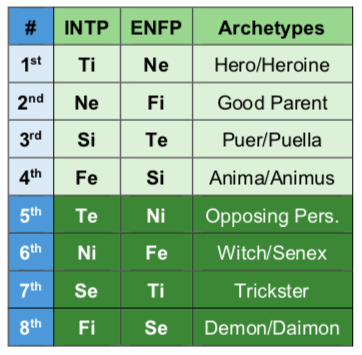 True to our typology, extraverted intuition (Ne), my dominant and Pat’s auxiliary function, is likely at play when we want to broadcast our music, develop programs, or organize events to connect the community. I am more likely to go wild here than Patrick, and his introverted thinking (Ti) dominant helps “real” us in. Recently, in the checkout line of the bookstore, I was offered a selection of inspirational cards and grew terribly excited when I drew one that encouraged me to “think more globally,” the perfect advice for an Ne dominant. Of course, I am ready for our band, The Mostest, to be an international success. Patrick’s response shows how his personality type brings mine down to earth: “That’s great, bro, but let’s make sure what we have going on here works a little better, first.”
True to our typology, extraverted intuition (Ne), my dominant and Pat’s auxiliary function, is likely at play when we want to broadcast our music, develop programs, or organize events to connect the community. I am more likely to go wild here than Patrick, and his introverted thinking (Ti) dominant helps “real” us in. Recently, in the checkout line of the bookstore, I was offered a selection of inspirational cards and grew terribly excited when I drew one that encouraged me to “think more globally,” the perfect advice for an Ne dominant. Of course, I am ready for our band, The Mostest, to be an international success. Patrick’s response shows how his personality type brings mine down to earth: “That’s great, bro, but let’s make sure what we have going on here works a little better, first.”
As Haas and Hunziker (2006/2014) noted, extraverted intuition “explores what could be” and “connects the current world to future possibilities and options” (p. 54). It is true, my ENFP approach could be credited (or blamed) for conjuring up most of the projects we now have going in the world. This type “will mold something in clay,” said von Franz (1971/1998), experience “something improving in himself,” and conclude that “‘this is … what should be introduced into all the schools,’ and away he goes again into all the possibilities” (p. 18).
Von Franz’s characterization is a humbling assessment of my way in the world. It describes, specifically, what I have done with my life: bringing arts mentoring into schools. “The main dilemma for extraverted intuitives,” however, “is that the very situations that seem to promise freedom or excitement quickly lead, once their possibilities have been exhausted, to the feeling of being imprisoned” (Sharp, 1987, p. 61). I recently wrote that I felt “suffocated” after two years of graduate school. Ultimately, I would say that my Ne function both brought me to academic study and is also calling me away from it. I readily see the pitfalls of Ne in myself: “As soon as no further developments can be divined,” I will “seek something new” (p. 61).
I am not at all certain that any of the projects mentioned above would have taken form and be working today if it were not for Patrick’s INTP preferences. In reference to the harmonious, “symbiotic” nature of extraversion and introversion, Jung offered that “one takes care of reflection and the other sees to the initiative and practical action. When the two types marry, they may affect an ideal union” (Sharp, p. 30). Looking at Patrick and myself through a typological lens, this seemingly simple statement opens a multiplicity of combinations within ourselves and between us. Viewed from this perspective, we find complex psychology.
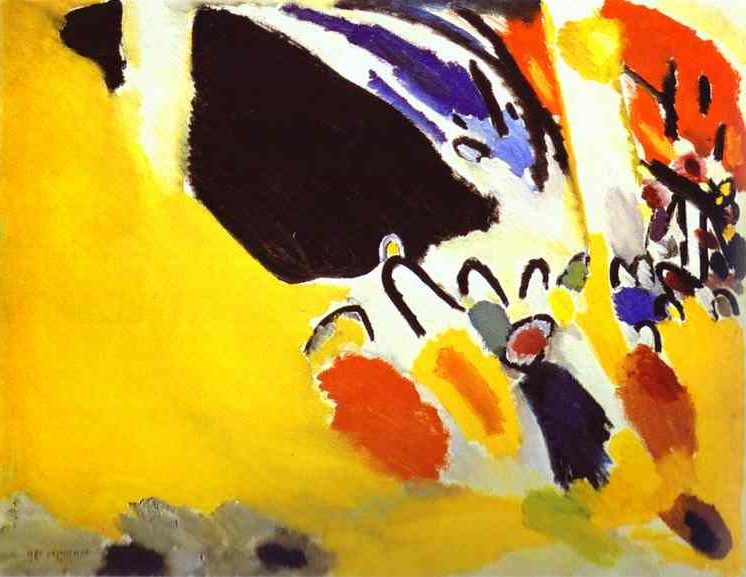 At a first look, introversion and extraversion appear to characterize the whole person, but as we dive into Jung’s typology and augmentations of it, we find these terms refer to attitudes, or directions of energy-flow that accompany the four functions. If I examine our functions instead of viewing myself as “the extravert” and Patrick as “the introvert,” I discover artful possibilities, obstacles to work through, and opportunities for individuation. It is not Pat’s introversion per se that balances my extraversion.Rather, I see my heroic, unbridled extraverted intuition affirmed by Pat’s auxiliary Ne, and directed by his dominant Ti. While I book and promote the gigs, deal with the venues, update the website, make the posters, hire the sound guy, and such, Patrick perceives the structure of things in his head. He sees potential problems in the plan and is quick to help revise; he gets us to the gig on time. Patrick is a great bassist, a wizard with music theory and arrangement, a precise master of tone, a magician in the studio, and for the last ten years has provided a road-map for the band—in the form of a set-list that magically appears at our feet every night we play. Pat’s introverted thinking is essential to the band’s operations.
At a first look, introversion and extraversion appear to characterize the whole person, but as we dive into Jung’s typology and augmentations of it, we find these terms refer to attitudes, or directions of energy-flow that accompany the four functions. If I examine our functions instead of viewing myself as “the extravert” and Patrick as “the introvert,” I discover artful possibilities, obstacles to work through, and opportunities for individuation. It is not Pat’s introversion per se that balances my extraversion.Rather, I see my heroic, unbridled extraverted intuition affirmed by Pat’s auxiliary Ne, and directed by his dominant Ti. While I book and promote the gigs, deal with the venues, update the website, make the posters, hire the sound guy, and such, Patrick perceives the structure of things in his head. He sees potential problems in the plan and is quick to help revise; he gets us to the gig on time. Patrick is a great bassist, a wizard with music theory and arrangement, a precise master of tone, a magician in the studio, and for the last ten years has provided a road-map for the band—in the form of a set-list that magically appears at our feet every night we play. Pat’s introverted thinking is essential to the band’s operations.
As much as I’ve come to appreciate and count on Patrick’s Ti to provide structure for my heroic Ne, my internal moral compass (Fi) supplies a needed parental counterpoint to his dominant introverted thinking preference. Because we are friends and not completely undifferentiated souls, the members of The Mostest can usually hear the reasoning of introverted feeling. I believe our vocation in the arts has promoted education of the feeling function for all of the band members, to a perhaps unusual degree. However, in most situations, the only reason Fi will trump Ti is because my Ne has locked on to the viability of my inner morality and applied it to a potential outcome of the given situation. “Introverted feeling … finds soundness and value inside one’s self from one’s own inner wealth and powers of appreciation and abstraction” (Myers & Myers, 1980/1995, p. 79). While Patrick has reliable statistics about how many cops there are between Moab and Telluride, and he knows exactly how long it will take us to get to the venue, loaded-in, and set up, it actually feels wrong to me to exceed the speed limit by too great a margin. In this tension-holding image, my exclamation, “I’d rather miss the gig than risk our lives—or get a ticket!” is met with a calm, “Dude, we are not going to die, we will not be pulled over, and we are going to make it to the show.”
When we are at odds, Patrick takes great pleasure in prodding me, in a devilishly unconscious manner at times, analyzing the way my Fi squirms when its boundaries are crossed. Fi occurs for Patrick in Beebe’s eighth, demonic/daimonic position and manifests as an unconscious, twisted attack reflex—with deeply hidden potential. As Beebe (2004) put it, “what I was best at and what I was worst at were two aspects or ‘ends’ of the same thing” (p. 91).Encountering the foreign-ness of introverted feeling in the shadow of his inferior function, Patrick’s reaction opens a channel to daimonic telos. Our creative differences are personified when we see them as a conflict between Pat’s daimon and my parent. The question that gets asked of Fi is, “What are our inner-most feeling values?” The devilish quality of Pat’s prodding points to the archetypal realm. In the Russian tale of “Vasilisa the Beautiful,” Vasilisa is aware of Baba Yaga’s deepest wounds and touchy areas, recognizing also that this is the source of her captor’s magic fire. Vasilisa knows not to get too close to Baba Yaga’s sensitive inner sanctum (von Franz, 1995, pp. 192-196). In Patrick’s inner-sanctum, what lies deepest (irritable Fi) is what gets prodded and subsequently projected.
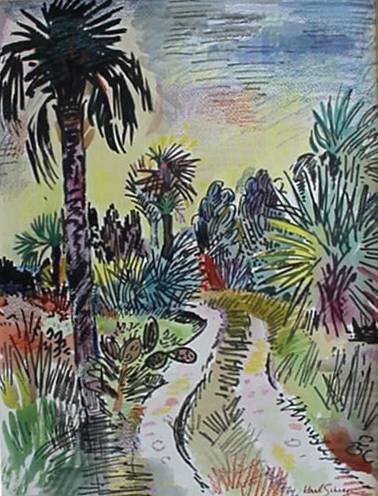 To deny the daimon is to marginalize its voice and shut down dialogue with part of our self—to deny relatedness. On the road, in close quarters, if this denial builds up, Pat and I are likely to descend into argument and suffer the wrath of demonic outbursts. Over the years we have logged much experience with this, though until now we have not attempted to put it into words. While we fight, the daimon and the parent seem to spar like a frustrated child with a stern but caring father. When recognized, cries of the daimon can cue a receptivity to what we resist in the land of our inferior functions and lead to meaningful life-work. This conflict between Pat’s daimonic Fi function and my parental Fi function could have broken up the band many times, but it has not. Why not? Patrick and I have worked at our partnership for many years, and we serve the same godhead, the band that is the unique musical expression of ourselves. Like one of the marriages Whyte talks about, the partnership of our favorite functions, annealed within the quasi-physical, quasi-psychic container of a 2005 Toyota 4Runner, is not only a winning roadshow but a lifelong opportunity for individuation. “In marriage, as Jung points out, one tends to marry the opposite type and then … he is, or so he thinks for the moment, freed from the disagreeable task of confronting his own inferior function” (von Franz, p. 7). As much as another may seem to provide a welcome cover for one’s blind side, hundreds of hours in a car with that person will demonstrate how temporary a solution it is to let another carry one’s unintegrated functions. At that point we have a choice to either try to understand each other (and ourselves)—which is inherently painful—or to let the band indulge its pathology and dis-member (also painful). The group continually re-forms into different configurations around us, like Dionysus in his redemptive, re-membering aspects, as Pat and I carry on our dialogue at the core.
To deny the daimon is to marginalize its voice and shut down dialogue with part of our self—to deny relatedness. On the road, in close quarters, if this denial builds up, Pat and I are likely to descend into argument and suffer the wrath of demonic outbursts. Over the years we have logged much experience with this, though until now we have not attempted to put it into words. While we fight, the daimon and the parent seem to spar like a frustrated child with a stern but caring father. When recognized, cries of the daimon can cue a receptivity to what we resist in the land of our inferior functions and lead to meaningful life-work. This conflict between Pat’s daimonic Fi function and my parental Fi function could have broken up the band many times, but it has not. Why not? Patrick and I have worked at our partnership for many years, and we serve the same godhead, the band that is the unique musical expression of ourselves. Like one of the marriages Whyte talks about, the partnership of our favorite functions, annealed within the quasi-physical, quasi-psychic container of a 2005 Toyota 4Runner, is not only a winning roadshow but a lifelong opportunity for individuation. “In marriage, as Jung points out, one tends to marry the opposite type and then … he is, or so he thinks for the moment, freed from the disagreeable task of confronting his own inferior function” (von Franz, p. 7). As much as another may seem to provide a welcome cover for one’s blind side, hundreds of hours in a car with that person will demonstrate how temporary a solution it is to let another carry one’s unintegrated functions. At that point we have a choice to either try to understand each other (and ourselves)—which is inherently painful—or to let the band indulge its pathology and dis-member (also painful). The group continually re-forms into different configurations around us, like Dionysus in his redemptive, re-membering aspects, as Pat and I carry on our dialogue at the core.
This last point has much to do with the ritual-religious style of our devotion to the band. “Serving the music,” which is the purpose of The Mostest, and staying true to this mission require that we tune our hearts toward the Hermetic, toward the voice of anima—experiences that for many (as Jung himself attested) can register as un-balanced, out of character, or not my self. Facing the multifaceted, dynamic nature of our selves through relationship makes our friendship via the agency of the Toyota soul-crucible a unique opportunity for function-development. Von Franz’s idea that in relationship we may wish to avoid the “disagreeable task” of facing our inferior function can be applied to any function less prominent than the superior function. Often unbalanced, our relationships facilitate function differentiation, though paradoxically, as Jung and von Franz affirm, these same relationships have the potential to block paths to individuation.
A closer look at Whyte’s idea of dialogue in place of balance may help deconstruct the barricade and connect Jung’s original work on typology to analytical psychology, archetypal psychology, and the MBTI® community. I don’t expect Patrick to see things like I see them, which is why he is an asset to The Mostest. He knows my faults and mirrors them back to me. After ten years, I am starting to receive his reflections.
The Myth of Balance
Although nearly all type practitioners use the word “balance” to describe the benefits of typology, when we understand it in these terms, we risk losing relationship with the polycentric, archetypal spectrum.
If Jung’s theory of psychological types speaks to personal, innate preferences, then I question whether psyche is or ought to be “balanced.” Is it not precisely the un-balanced psychological function-preferences of Freud, Adler, and Jung that made each of them uniquely fit to foster their distinctive psychologies? Hillman might interject here that the very notion of balance, like analysis, is a default because our perspective is decidedly rational, monotheistic, ego-centered, and Apollonian. Balance cannot put soul in the center because it does not allow for anything other than a dichotomous way.
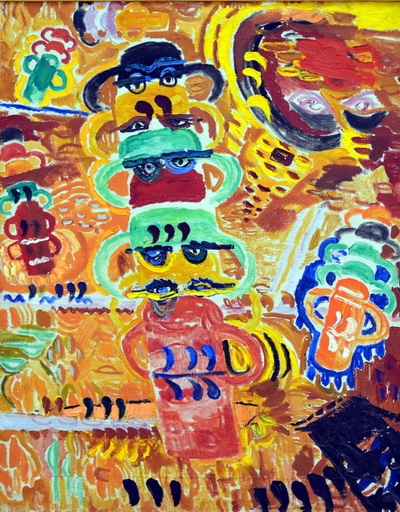 When we consider ourselves “unbalanced,” what do we do? We think about the actions we could take, the behavior modifications we might make, even the images we should re-vision that will lead in a linear fashion to some balanced goal. Balance does not honor soul. I argue, as Hillman (2014) might, that this forward-thinking process takes us out of our emotional and physical bodies and disconnects us from what he titled “the thought of the heart”—which does not value balance but can shift perspective. Pursuing a more “soulful” approach requires creating an inter-culture dialogue between our thinking–feeling continuum and our sensing–intuiting spectrum. In Beebe’s typological diagram, a second cross delineates the shadow functions. This gives Beebe’s mandala a three-dimensional quality that moves us toward the imaginal, unconscious, and archetypal, with a “center” that suggests Jung’s “self”—the conscious ego position in dialogue with teleological aspects of the unconscious.
When we consider ourselves “unbalanced,” what do we do? We think about the actions we could take, the behavior modifications we might make, even the images we should re-vision that will lead in a linear fashion to some balanced goal. Balance does not honor soul. I argue, as Hillman (2014) might, that this forward-thinking process takes us out of our emotional and physical bodies and disconnects us from what he titled “the thought of the heart”—which does not value balance but can shift perspective. Pursuing a more “soulful” approach requires creating an inter-culture dialogue between our thinking–feeling continuum and our sensing–intuiting spectrum. In Beebe’s typological diagram, a second cross delineates the shadow functions. This gives Beebe’s mandala a three-dimensional quality that moves us toward the imaginal, unconscious, and archetypal, with a “center” that suggests Jung’s “self”—the conscious ego position in dialogue with teleological aspects of the unconscious.
Jung suggested that “one-sided emphasis on thinking is always accompanied by an inferiority of feeling” (Sharp, 1987, p. 15). Such statements imply a split—a separation between the two functions. But he first contains thinking and feeling together as “rational” functions. Jung’s rational (thinking–feeling) and “irrational” (sensing–intuiting) functions, overlaid together in Beebe’s spine-and-arms cross, augment what I see as Jung’s imaginal process. Beebe’s spine and arms suggest typology as a quaternity, the image of a mandala—a Jungian symbol of the self. We come into the world an unbalanced personal equation with unique preferences for attitudinal functions, and we can use of all these modes if we attentively engage the figures of our experience, both internal and external.
Close attention to the intersection at the heart of Beebe’s cross shows the overlap of two continuums. Shifting one’s focus to this connection changes the perspective from looking at what is contained to what is joined or related. According to Beebe (2004), “Consciousness is the experience of knowing together with another … in a setting of twoness” (p. 86). In a dialogical process, instead of one contained circle, one mandala, focus shifts to two circles, two mandalas intersecting. With this shift, we may imagine two selves instead of one and a new shape emerging between them: the mandorla—an image of relatedness. One of the biggest challenges in our culture seems to be finding space in our lives to engage our personal-development practices. One could say this is what participation in Beebe’s typological mandala seeks: a move toward relatedness with aspects of ourselves and others. Uncovering the attitudes and variations of function pairings and preferences, we encounter in our vocational and personal lives ongoing opportunities for self-realization.
The Umbilical Cord
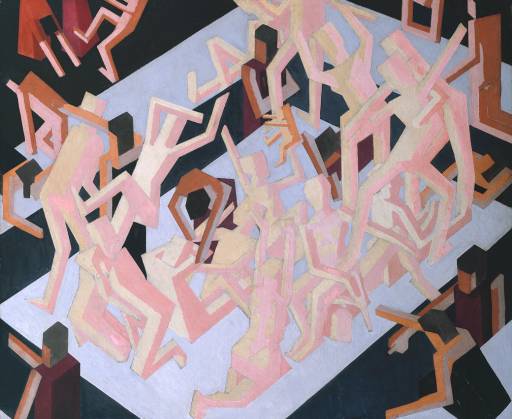 “When it becomes … necessary to develop the inferior function,” says von Franz (1971/1998), “this can only happen gradually, and by first going through one of the auxiliary functions” (p. 25). My own experience supports von Franz’s insight, as well as my own budding dialogical typology model. Although I may often seem far away from Si (my inferior function), I can nevertheless feel the umbilical cord that joins the “distance” between Ne and Si—lending phenomenological support for James Hillman’s (1971/1998) emphasis on feeling.
“When it becomes … necessary to develop the inferior function,” says von Franz (1971/1998), “this can only happen gradually, and by first going through one of the auxiliary functions” (p. 25). My own experience supports von Franz’s insight, as well as my own budding dialogical typology model. Although I may often seem far away from Si (my inferior function), I can nevertheless feel the umbilical cord that joins the “distance” between Ne and Si—lending phenomenological support for James Hillman’s (1971/1998) emphasis on feeling.
Hillman stated that “self-realization is a process of feeling-realization” (p. 102). It follows, then, that what is inferior for us may be approached via education of our feeling function: “If the complexes are defined as groups of feeling toned ideas, then … one way into every complex is via its feelings” (p. 98). Hillman’s observation speaks directly to the musical calling of our band, The Mostest. When we talk about the “quality” of a chord, we are referring to its emotional content. The first and third notes of a major scale, played together, will create a major chord, but if we lower the third just a half-step, the emotional quality shifts from major to minor. Without knowing anything about music, we can feel it. Learning to notice subtle variations between notes added to and taken away from chords is a feeling-toned exercise, an educator of the feeling function. Honoring this practice encourages us to serve the polytheistic soul of the music not by denying Apollo, but by asking him to help us realize whose voices have been marginalized.
When we get past the mistake of labeling each other as certain “types” (which tends to favor our thinking mode) and begin to focus on the psycho-dynamics and psycho-dramatics of our functions, typology connects us to personified figures of the unconscious and to Jung’s complex psychology.
While educators cannot negate the Apollonian biases of Western education, they can nonetheless create environments which educate feeling. Students labeled “disruptive,” “dyslexic,” “attention-deficit,” or “Asperger’s spectrum” may always struggle in our extraverted thinking culture, but the artistic process can be a mediating tool between students’ frustrations and their involvement in the community.
Transcending balance, my auxiliary Fi seems to connect a circuit of communication. My thinking function is also activated here, as the umbilical cord image is engaged by Te’s logic. Extraverted thinking may have even helped me conjure the image, which, although it pushes the boundaries of what Jung imagined for us, suggests to me that points on and between these continuums (Beebe’ spine and arms) can function simultaneously. In my function-dialogue model, Te in the tertiary position, connected by rational-function “nature” to Fi—through the heart of Beebe’s stick fellow—helps open the circuit between dominant Ne and inferior Si. Another way of saying this is that my auxiliary Fi, and thereby the feeling–thinking function continuum, helps “see through” the distance, to contain the intuiting–sensing spectrum. Like a form of chakra-clearing acupuncture, attention on the intersection of our typological spine and arms moves us, metaphorically, toward heart-consciousness, and to the prospect of differentiating what is inferior.
Jung, Beebe, and von Franz all suggested that it is through the shaded cellar door of the inferior (4th) function that the deep reaches of the demonic/daimonic eighth position are accessed. At the other end of my Ne umbilical cord is the land of my inferior function, introverted sensation, and its shadowed daimonic calling. Introverted sensation archives the past for us, and for my whole life I have been running from family history—ever since I first took refuge from the storm under the shelter of my guitar. Coming of age, navigating experiences of the volatile father, I learned of an “unspeakable” grandfather I never knew and the silent suffering that generations had endured on my father’s side of the family. Music became an escape and a mediator of powerful forces for me. Experiencing the unfavorable tendencies of this mysterious, unspoken Voldemort character in myself, in the form of what my generation now calls “family karma,” I followed my guitar as far as I could, away from my heritage and into life as a musician. Although I did not know it at the time, this would lead me to my vocation, which in midlife brought me to the study of Jungian psychology. Now I am called to cultivate Si, a function that can help tap the wisdom hiding behind my family’s silence. According to Haas and Hunziker (2006/2014), “Introverted sensing … looks at what happened,” sees “how it could be improved,” and “learns from past mistakes” (p. 44).
Coda
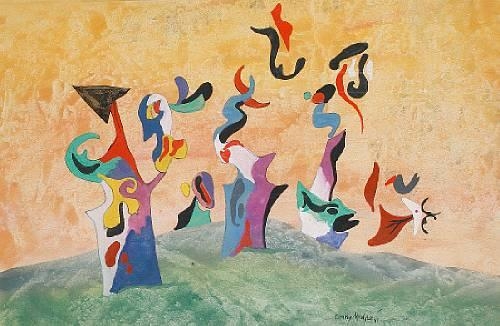 The dynamics of creative process and psychological wellbeing are such that artists are often overcome by the demonic. From Nietzsche’s Zarathustra to Kurt Cobain’s Nirvana, there is an artistic star swallowed by the unconscious every week. But the arts can also be a type of savior—a place for us to process our darkness and not become it. An environment that honors the way our function-attitudes and preferences are naturally unbalanced is one that honors diversity and helps cultivate all of our functions. To create such a culture requires a feeling-based educational system. In the “Zen Guitar Dojo,” as master guitarist Philip Toshio Sudo calls it, every strength and style is recognized (1997, p. 13). We learn to join the musical conversation as we are initiated in practice by those who have gone before and who also naturally favor different functions. We are humbled in this collaborative, de-centered training zone and learn to serve the art, or Hillman might say “Soul,” instead of (rock star) Ego.
The dynamics of creative process and psychological wellbeing are such that artists are often overcome by the demonic. From Nietzsche’s Zarathustra to Kurt Cobain’s Nirvana, there is an artistic star swallowed by the unconscious every week. But the arts can also be a type of savior—a place for us to process our darkness and not become it. An environment that honors the way our function-attitudes and preferences are naturally unbalanced is one that honors diversity and helps cultivate all of our functions. To create such a culture requires a feeling-based educational system. In the “Zen Guitar Dojo,” as master guitarist Philip Toshio Sudo calls it, every strength and style is recognized (1997, p. 13). We learn to join the musical conversation as we are initiated in practice by those who have gone before and who also naturally favor different functions. We are humbled in this collaborative, de-centered training zone and learn to serve the art, or Hillman might say “Soul,” instead of (rock star) Ego.
“Playing in the Band” is a Grateful Dead song title and lyric. To me, it is also a metaphor for life in service of Soul. In ancient Greek terms nous (reason) does not exist without the goddess Necessity (all that is irrational and unintended). While parts of us strive for order, balance, and a strategic plan of action to move our band forward, the way of rock ‘n’ roll is, as I have mentioned, Dionysian, Hermetic, and animistic. In the song “The Music Never Stopped,” Bob Weir, rhythm guitarist for the Dead, sings of moments when “the music plays the band,” and in a recent documentary about the Grateful Dead, Long Strange Trip (2017), Jerry Garcia, the band’s iconic leader, said he was tired of being a “me” and felt more like a “we.” The words of these singer-songwriters move us back through our ancestors, into the collective, and toward the ancient Greeks’ feeling for anima mundi or “world soul.” Putting soul in the center, in dialogue with band mates, the community they created, and their own internal experience, The Grateful Dead served the art in a way we can serve our own psychic life. What would it feel like to die grateful? This experience comes with a shift in perspective from an unbalanced “me” as Garcia said, to a multifaceted, dynamic, related we.
My work with Patrick in the Zen Guitar Dojo and on the road in the soul-crucible offers ongoing opportunities to engage the dialogical process, initiate individuation, differentiate functions, and de-center ego. We are sure to ride more waves of dissonance and harmony, and any effort at balance would likely bore us to death—ungrateful deaths. I may always reach for the stars and, grasping a few, find a trillion other projects to unfold from each one. And while Patrick may always have a map in his head and is “not apt to know, unless told, what matters emotionally to another person” (Myers & Myers, p. 89), The Mostest will get to the venue on time and deliver a great show.
References
Beebe, J. (2004). Understanding consciousness through the theory of psychological types. In J. Cambray & L. Carter (Eds.), Analytical psychology: Contemporary perspectives in Jungian analysis (pp. 83-115). Hove, England: Brunner-Routledge.
Haas, L., & Hunziker, M. (2006). Building blocks of personality type: A guide to using the eight- process model of personality type: Jung’s mental processes. Huntington Beach, CA: Unite Business Press.
Hillman, J. (1996). The soul’s code: In search of character and calling. New York, NY: Random House.
Hillman, J. (1998). The feeling function. In M.-L. von Franz & J. Hillman, Lectures on Jung’s typology. Woodstock, CT: Spring Publications. (Original work published in 1971)
Hillman, J. (2014). The thought of the heart and the soul of the world. Putnam, CT: Spring Publications.
Myers, I. B., & Myers, P. B. (1995). Gifts differing: Understanding personality type. Mountain View, CA: Consulting Psychologists Press.
Sharp, D. (1987). Personality types: Jung’s model of typology. Toronto, Canada: Inner City Books.
Sudo, P. T. (1997). Zen guitar. New York, NY: Simon and Schuster.
von Franz, M. L. (1995). Shadow and evil in fairy tales. Boston, MA: Shambhala.
von Franz, M.-L. & Hillman, J. (1998). The inferior function. In M.-L. von Franz & J. Hillman, Lectures on Jung’s typology. Woodstock, CT: Spring Publications. (Original work published 1971)
Whyte, D. (2009). The three marriages: Reimagining work, self and relationship. New York, NY: Riverhead Books.
Images
Bomberg, D. (1912). Vision of Ezekiel. Retrieved from wikiart.org
Kandinsky, W. (1911). Impression III (concert). Retrieved from wikiart.org
Maddox, C. (1941). Enchantment. Retrieved from wikiart.org
Schrag, K. (n.d.). Road into the sanctuary (Sanibel). Retrieved from wikiart.org
Saygi, F. M. (n.d.). Untitled. Retrieved from wikiart.org
Tuculescu, I. (n.d.). Heat. Retrieved from wikiart.org
Ward, L. (n.d.). Cup of sky. Retrieved from wikiart.org



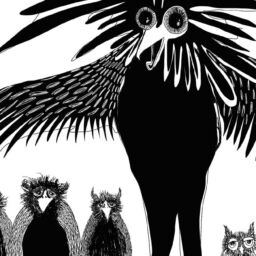
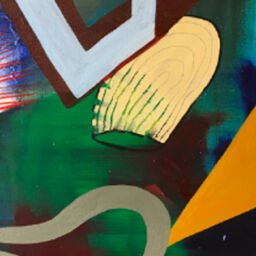
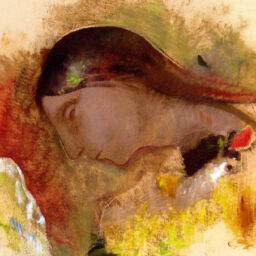

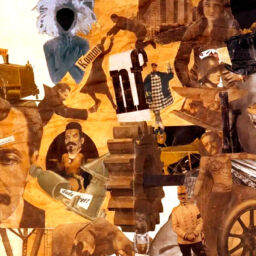
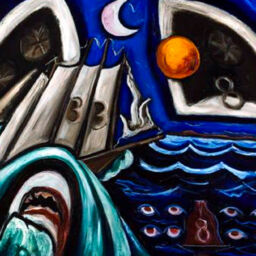



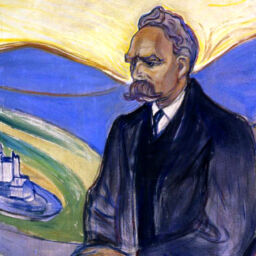

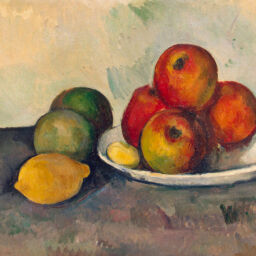

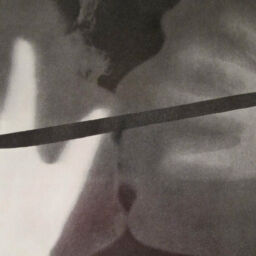

Thank you for this lovely and entertaining road trip of yours and Patrick’s! I love the vision of musicians dancing with Archetypes and your reminding us that we don’t have to know anything about music to feel it!